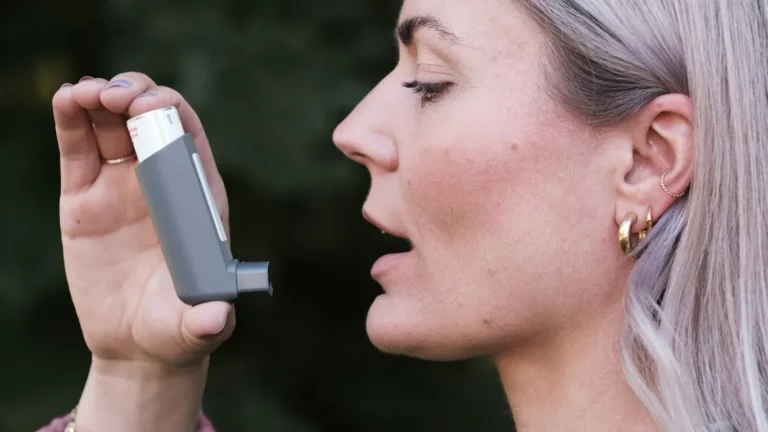Ultimate GERD Friendly Food Swaps to Soothe Your Digestive System
If you’ve ever had that awful burning in your chest after a meal, I feel you. Working as a Medical Assistant in a busy Gastroenterology Clinic, I saw firsthand how common acid reflux and GERD really are. And trust me, patients weren’t just dealing with discomfort—they were frustrated about giving up their favorite foods. The good news? You don’t have to sacrifice taste to feel better. That’s where GERD friendly food swaps come in. With the right adjustments, you can still enjoy delicious meals without paying for it later.
Understanding GERD and Why Food Matters

GERD—short for Gastroesophageal Reflux Disease—is more than just occasional heartburn. It’s a chronic condition where stomach acid frequently flows back into the esophagus, irritating the lining. And yep, diet plays a *huge* role. One of the first things our providers would go over with newly diagnosed patients was their eating habits. That’s because certain foods can relax the lower esophageal sphincter (LES), the muscle that’s supposed to keep acid where it belongs.
Now, here’s where it gets real: most folks assume they have to give up all the good stuff. But from what I’ve seen—and tried myself when I had my own flare-ups—it’s not about deprivation, it’s about making smart swaps that still satisfy.
Common Trigger Foods and Smart GERD Friendly Food Swaps

1. Ditch the Citrus, Embrace Mellow Fruits
Oranges, grapefruits, lemons… yeah, they’re healthy, but for people with GERD, they’re like fuel to the fire. I remember one patient telling me even a small glass of OJ could ruin his whole morning. Instead, go for bananas, melons, apples (peeled), and pears. These fruits are lower in acid and much gentler on the stomach.
2. Say Bye to Spicy, Hello to Herby
Hot sauce lovers, this one’s tough. Spicy foods were a major trigger for many of my patients. I’d suggest seasoning with GERD-friendly herbs instead: basil, parsley, thyme, oregano. These still bring tons of flavor without the regret.
3. Swap Out Fried Foods for Baked or Grilled
Fatty, greasy meals slow down digestion and increase the chances of reflux. Instead of fried chicken or onion rings, think grilled salmon, roasted veggies, or oven-baked sweet potato fries. One patient told me she started using an air fryer and it totally changed her game—crispy texture, but way easier on her digestion.
4. Chocolate Cravings? Go for Carob or a GERD-Safe Sweet
This one broke a lot of hearts in our clinic—chocolate is a known trigger due to its caffeine and fat content. But carob (which tastes surprisingly similar) or even a small serving of vanilla pudding or chamomile tea with honey can be a sweet fix.
5. Soda and Sparkling Water? Try Flat, Herbal Options
Carbonation can increase pressure in the stomach, making reflux more likely. We always recommended swapping soda or bubbly water for still water, aloe vera juice, or caffeine-free herbal teas like ginger or chamomile. I had a patient who switched from diet soda to cold chamomile tea with a splash of apple juice—she said her reflux cut down by half in a week.
Small Swaps, Big Difference: A Day in the Life

Here’s what a GERD-friendly day might look like, based on tweaks we helped our patients make at the clinic:
- Breakfast: Oatmeal with almond milk, sliced bananas, and a dash of cinnamon
- Lunch: Grilled chicken wrap with lettuce and hummus (skip the tomato and onions)
- Snack: Apple slices with almond butter
- Dinner: Baked salmon, steamed broccoli, and quinoa with a drizzle of olive oil
- Evening Wind-Down: Chamomile tea and a rice cake with a light spread of honey
Notice something? No extreme restrictions—just thoughtful choices. These GERD friendly food swaps can truly be the difference between a painful night and peaceful digestion. And honestly, it becomes second nature once you find what works for your body.
How Meal Timing and Portion Control Help GERD

Okay, so we’ve talked about GERD friendly food swaps, but there’s another piece of the puzzle that’s just as important: *when* and *how much* you eat. Back at the clinic, I’d often hear patients say, “But I didn’t eat anything spicy!”—only to find out they had a huge dinner right before bed. Oof, classic reflux trap.
Timing is everything. Try eating at least 2–3 hours before lying down. This gives your stomach a chance to start digesting and reduces the chance of acid sneaking back up. I’ve seen patients drastically reduce nighttime reflux just by adjusting their dinner time.
Also, go easy on portions. Eating large meals can stretch your stomach and put pressure on your LES. That’s why smaller, more frequent meals often work better. One trick I’ve shared with patients: use a smaller plate. It’s simple, but it helps keep portions in check without feeling deprived.
Smart Portion Tips:
- Use the “plate method”: half veggies, a quarter lean protein, a quarter whole grains
- Eat slowly—put your fork down between bites
- Listen to your body; stop eating when you feel *comfortable*, not full
Hidden Triggers in Everyday Foods

Another thing I’d regularly walk through with patients was label reading. You’d be surprised at how many sneaky ingredients can worsen reflux. Even foods marketed as “healthy” sometimes contain acidic or irritating components.
Watch out for:
- Tomato paste hidden in soups, sauces, and frozen meals
- Garlic and onion powder in spice blends and seasoning packets
- Citric acid added to drinks, canned fruit, or even supplements
- Mint—especially peppermint, which can relax the LES
One of my patients brought in a list of everything she ate for a week. We went over it together, and boom—her “healthy protein bar” was packed with chocolate, coffee extract, and peppermint oil. No wonder she was miserable!
Pro Tip: Keep a food journal if you’re not sure what’s causing flare-ups. It’s something we’d often recommend during appointments, and it really helps connect the dots.
Comforting Meals That Don’t Sacrifice Flavor

Let’s talk flavor—because nobody wants bland, boring food. The good news is, GERD-safe meals can be packed with taste if you get a little creative. I’ve helped patients build meal plans they actually *looked forward to*, and I’ve used many of these swaps at home when I’ve had reflux myself.
GERD Friendly Dinner Ideas:
- Stuffed Bell Peppers: Use lean ground turkey, brown rice, and chopped spinach. Skip tomato sauce and try a drizzle of olive oil and herbs.
- Zucchini Noodles with Chicken: Toss with sautéed zucchini, garlic-infused oil (use a garlic-infused oil instead of raw garlic), and fresh basil.
- Quinoa and Veggie Stir-Fry: Use low-sodium tamari, chopped bok choy, carrots, and tofu. Keep it light and serve it warm—not spicy hot.
One of my favorite patient success stories was a man in his 60s who swapped his nightly chili for a mild lentil soup with turmeric and thyme. He was shocked at how flavorful it was and said he hadn’t slept that well in years.
Flavor Boosters Without the Burn:
- Fresh herbs: parsley, dill, cilantro
- Infused oils: like basil or garlic-infused olive oil (not raw garlic!)
- Low-acid condiments: a splash of coconut aminos or mild mustard
- Roasting: brings out natural sweetness in veggies like carrots, squash, and beets
There’s something empowering about learning to work with your body instead of against it. I always told patients that managing GERD isn’t just about restriction—it’s about discovery. And these GERD friendly food swaps open the door to new routines that are both delicious and healing.
Lifestyle Tips to Complement GERD Friendly Food Swaps

Alright, so you’ve got the food swaps down, and you’re tweaking meal times and portions—but there’s more to managing GERD than just what’s on your plate. From my experience in the clinic, the folks who combined dietary changes with simple lifestyle habits often saw the biggest relief.
Here are some easy lifestyle tweaks that can really complement those GERD friendly food swaps and help keep symptoms in check:
1. Elevate Your Head While Sleeping
This is a game changer, especially for nighttime reflux. Elevating your head 6–8 inches can use gravity to keep stomach acid down. I always suggested patients try a wedge pillow or even stack some firm pillows under their mattress. It sounds simple, but the relief can be huge.
2. Avoid Tight Clothing
When clothes squeeze your midsection, they put extra pressure on your stomach and LES. I often noticed reflux flares in patients who switched to looser, more comfortable clothing—especially after meals. So yes, comfy pants aren’t just for lounging!
3. Manage Stress
Stress doesn’t directly cause reflux, but it can worsen symptoms by increasing stomach acid and slowing digestion. From what I’ve seen, incorporating relaxation techniques like deep breathing, yoga, or even just a short walk after eating can calm both your mind and your gut.
4. Stay Upright After Meals
Lying down right after eating? Big no-no. Aim to stay upright for at least two hours post-meal to help digestion and prevent acid reflux. Some patients got creative by using this time to take a light stroll or do gentle stretches.
Hydration and Beverages: What to Sip and What to Skip

When it comes to drinks, not all liquids are created equal—especially if you’re dealing with GERD. I always told patients that beverages can be just as triggering as solid foods.
What to avoid: caffeine, alcohol, carbonated drinks, and citrus juices are common offenders. These can relax the LES or irritate the esophagus lining.
Better choices? Glad you asked.
- Water: Always your best bet. Room temperature or slightly cool is often easiest on the stomach.
- Herbal teas: Chamomile, ginger, or licorice teas are soothing and can even help digestion.
- Aloe vera juice: In small amounts, it has natural anti-inflammatory properties, but always choose a brand free of added sugars.
- Coconut water: Naturally hydrating and usually well tolerated by GERD sufferers.
One memorable patient was a huge coffee fan who thought quitting was impossible. Instead, she switched to a decaf herbal blend with hints of cinnamon and vanilla. Not only did her reflux improve, but she actually enjoyed her “coffee” breaks more!
When to See a Doctor: Knowing Your Limits
While lifestyle and diet changes can make a big difference, it’s crucial to know when it’s time to seek professional help. Persistent heartburn, difficulty swallowing, or unexplained weight loss are red flags that should never be ignored. In the clinic, we always stressed early intervention can prevent complications and improve quality of life.
If you’re experimenting with GERD friendly food swaps and lifestyle adjustments but still feeling discomfort, don’t hesitate to talk to your healthcare provider. Sometimes medications or diagnostic tests like endoscopy might be necessary to get to the root of the problem.
References and Resources
Disclaimer
This article is intended for informational purposes only and does not replace professional medical advice, diagnosis, or treatment. Always consult your healthcare provider with any questions you may have regarding a medical condition or before making significant changes to your diet or lifestyle.
From my time working alongside gastroenterologists and helping patients navigate their symptoms, I’ve learned that managing GERD is a journey. With thoughtful food swaps, mindful habits, and support from your care team, you can find your way back to feeling comfortable and enjoying life’s flavors again.

Camellia Wulansari is a dedicated Medical Assistant at a local clinic and a passionate health writer at Healthusias.com. With years of hands-on experience in patient care and a deep interest in preventive medicine, she bridges the gap between clinical knowledge and accessible health information. Camellia specializes in writing about digestive health, chronic conditions like GERD and hypertension, respiratory issues, and autoimmune diseases, aiming to empower readers with practical, easy-to-understand insights. When she’s not assisting patients or writing, you’ll find her enjoying quiet mornings with coffee and a medical journal in hand—or jamming to her favorite metal band, Lamb of God.






